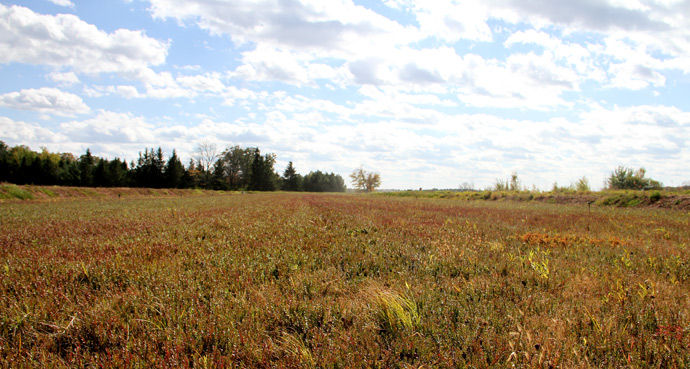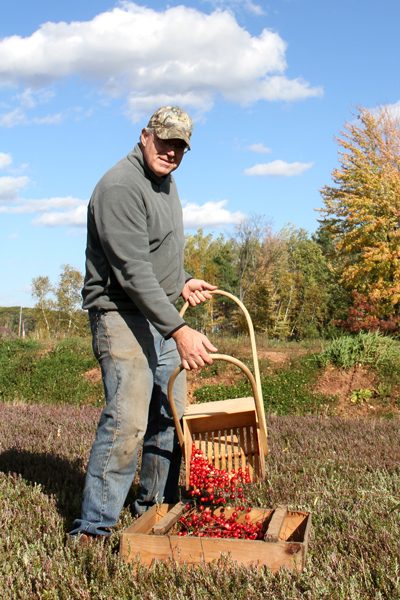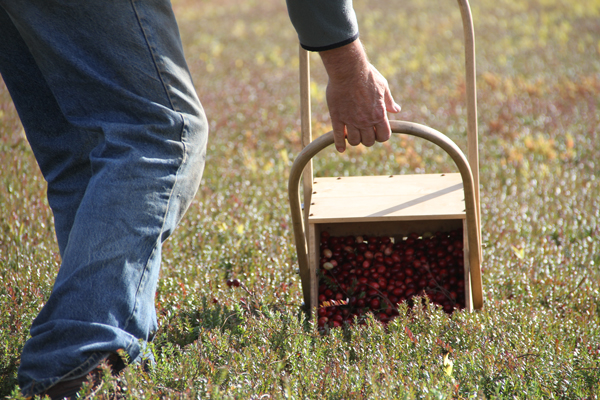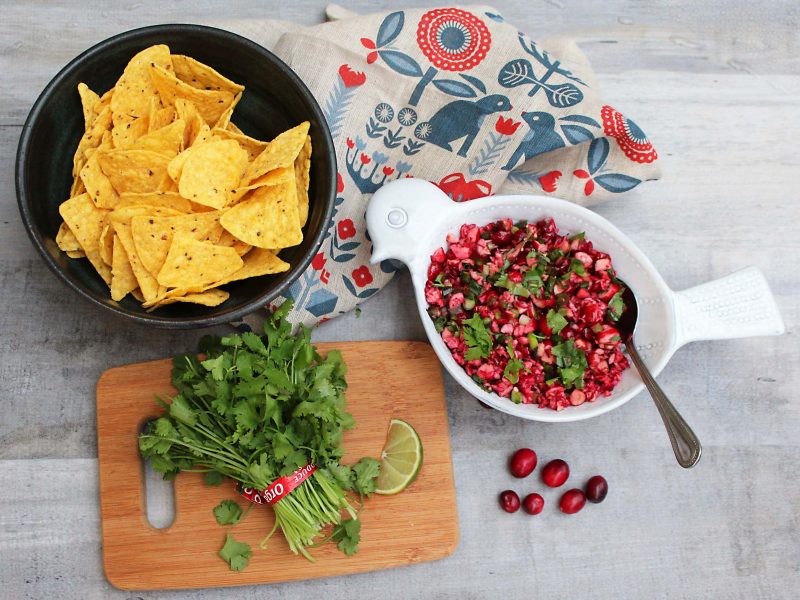Wisconsin Rapids, Wisconsin
 If you were out driving on Meunier Road in Vesper, Wisconsin you might not notice the three sloping dips in the landscape that make up the Ruesch Century Farm. That’s probably because this collection of five acres of low-growing shrubbery, nestled up against woodlands to the east and bordered by a petite irrigation pond on the north, is considered the smallest organic cranberry bog in the world.
If you were out driving on Meunier Road in Vesper, Wisconsin you might not notice the three sloping dips in the landscape that make up the Ruesch Century Farm. That’s probably because this collection of five acres of low-growing shrubbery, nestled up against woodlands to the east and bordered by a petite irrigation pond on the north, is considered the smallest organic cranberry bog in the world.
It is also the first certified organic cranberry farm in Wisconsin. Not that farming is a new thing for Brian Ruesch. His family has continually tended to this land for more than 135 years, since his relatives came over from Switzerland and Germany to homestead on the frontier in the 1860s, though the cranberries are a somewhat recent addition. When Ruesch was a kid, they raised cows on the farm and hand-milked them. Back then, there were something like 1,500 dairy farms in the county. There were farm kids everywhere. They used to come over in droves to the big hill on the Ruesch farm, where the house and barn is built, and use it as a ski slope in the winters. They even hooked up an electric motor and had lights and a tow rope. That’s all changed now. Ruesch works the land alone, with occasional help from his brother and others during the fall harvest. He’s got one cousin with a conventional marsh that you can see from the old skiing hill. But much of his extended family has moved on, along with much of the rest of the farming community. Today there are only 300–400 dairy farms left in the area and a lot of cranberries. Wood County, Wis., is the largest cranberry producing county in the world.
 Which makes sense because cranberries are native here and grow well in this climate. Not that they’re easy to cultivate, especially organically. Insects and weeds are a real problem. But rather than use chemicals, Ruesch uses natural methods to keep the weeds under control until the cranberry vines are established enough to take over the marsh (read, a lot of hand weeding). And he uses controlled flooding to suppress fruit worms and fireworms. The yield on organic cranberries is much lower than conventionally grown— about 10 times less. Ruesch also dry harvests with a mechanical cranberry rake and Amish hand tools, which means that he is working hard for every barrel of berries that come off the bog.
Which makes sense because cranberries are native here and grow well in this climate. Not that they’re easy to cultivate, especially organically. Insects and weeds are a real problem. But rather than use chemicals, Ruesch uses natural methods to keep the weeds under control until the cranberry vines are established enough to take over the marsh (read, a lot of hand weeding). And he uses controlled flooding to suppress fruit worms and fireworms. The yield on organic cranberries is much lower than conventionally grown— about 10 times less. Ruesch also dry harvests with a mechanical cranberry rake and Amish hand tools, which means that he is working hard for every barrel of berries that come off the bog.
In a traditional wet harvest, you flood the bed with one foot of water, and then you use a device to press the vines down. This kicks up the berries to the surface (because they float). And then you use paddles to bring the berries up onto a conveyor belt, and then you’re off to the races. But Ruesch doesn’t do that. Cranberries often spend a lot of time in storage or on grocery store shelves, and when you wet harvest them, they get a bit more brutalized. Wetness gets into the core, and they deteriorate much more quickly. Stores wind up having to throw away a lot more. But with dry raking you get less of that decay. And Ruesch believes that this method produces a superior berry that lasts longer (which our produce gurus at CPW confirmed!) But it’s a heck of a lot of work.
 “Oh my gosh,” said Ruesch, hauling off another bag from the rake. “It’s ridiculously more work. But I really believe at the end of the day customers are going to be happier with my berries.”
“Oh my gosh,” said Ruesch, hauling off another bag from the rake. “It’s ridiculously more work. But I really believe at the end of the day customers are going to be happier with my berries.”
View the Winter 2014-2015 Share PDF
Back to Winter 2014-2015 Share articles

